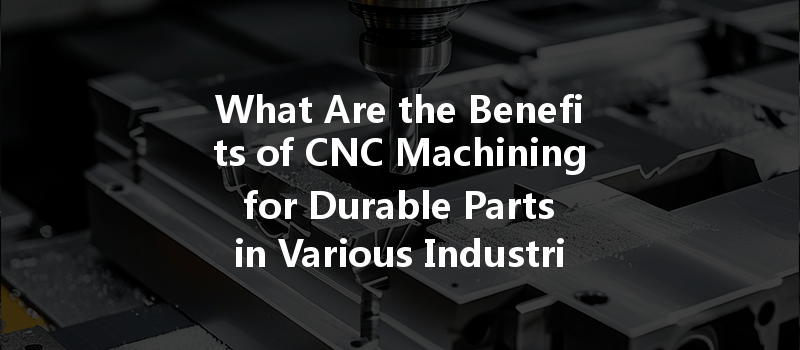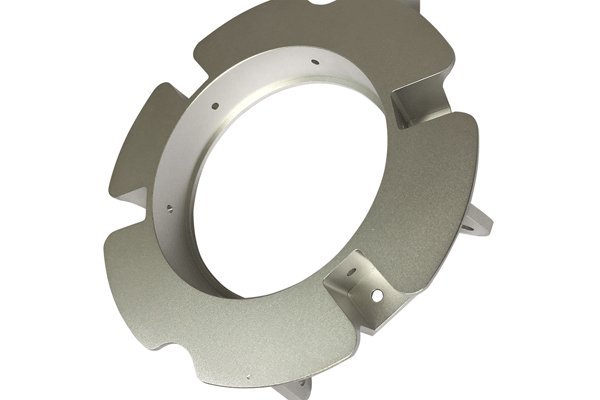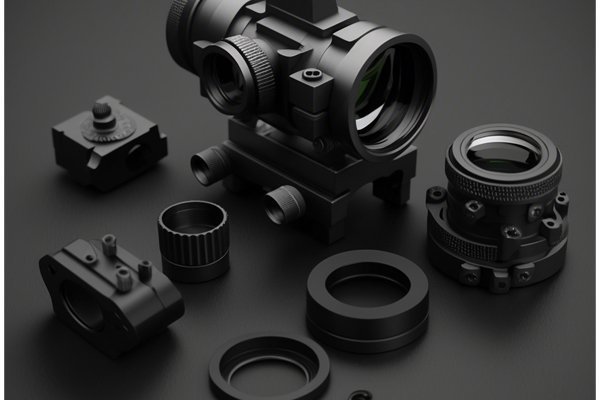Did you know that over 80% of manufacturers reported an increase in efficiency and accuracy after implementing CNC (Computer Numerical Control) machining technologies? This astonishing figure highlights the transformative impact of CNC machining on the manufacturing landscape, particularly when it comes to creating durable parts for a variety of industries. Whether it’s in aerospace, automotive, medical, or electronic sectors, CNC machining has revolutionized the way parts are produced, pushing the boundaries of what was previously thought possible.
Understanding CNC Machining
Before diving into the benefits, it’s vital to grasp what CNC machining entails. CNC machining is an automated manufacturing process that utilizes computerized controls to operate machinery—such as lathes, mills, and grinders—to create precise and intricate parts from various materials, including metals, plastics, and composites. The trade-off between manual machining and CNC is clear: the latter offers unparalleled precision and repeatability.
The Process of CNC Machining
Advantages of CNC Machining for Durable Parts
CNC machining produces parts with near-perfect precision. In industries where tolerances can be as tight as ±0.001 inches, the ability to create high-quality parts is essential. This precision results from consistent programming and the fact that CNC machines can operate without human error.
Real-World Example
In aerospace manufacturing, for instance, components like turbine blades must adhere to stringent tolerances for safety and performance. A slight deviation from the required specifications could result in catastrophic failures.
Once a CNC program is written, a machine can produce identical parts repeatedly without compromising quality. This repeatability is critical in large-scale production and significantly reduces the costs associated with human labor and error.
When Consistency Matters
Automotive manufacturers often require thousands of identical components, such as brackets or fittings. CNC machining allows them to achieve this consistency effortlessly, enabling mass production while maintaining quality.
CNC machining can process a wide range of materials, from metals like aluminum and stainless steel to polymers and composite materials. This versatility allows industries to use the best-suited material for their specific application, enhancing the durability and performance of parts.
Industries that Benefit
CNC machines excel at creating complex geometries that manual machining simply cannot achieve. With multiple axes of movement, CNC machining can fabricate intricate features, bevels, and cavities easily.
Complex Parts in Demand
In the medical industry, custom prosthetics and implants are manufactured to fit individual patients’ needs, which often require complex shapes that are effectively produced using CNC technology.
CNC machining significantly reduces the time required to produce parts, allowing for faster turnaround times on projects. By automating the labor-intensive processes, manufacturers can optimize production schedules and respond quicker to market demands.
Increased Productivity
In the aerospace sector, speed is critical not only for production but also for innovation. Rapid prototyping enabled by CNC machining allows for new designs to be evaluated and tested without long lead times, ensuring the industry remains competitive.
CNC machining operates with high efficiency when it comes to material utilization. The technology allows for precise cuts that minimize leftover scrap, which can lead to cost savings and a more environmentally friendly manufacturing process.
Environmental Impact
As sustainability becomes a priority, companies are increasingly choosing CNC machining for its ability to reduce waste. This approach helps manufacturers cut costs while also addressing environmental concerns.
With CNC technology, bespoke parts can be fabricated to meet specific requirements. This customization capability is beneficial for industries like aerospace and automotive, where particular dimensions and properties are essential for performance.

Tailored Solutions
For instance, custom aluminum parts for aircraft must satisfy particular design and performance specifications. CNC machining allows for this level of customization without significant changes in production processes.
Although the initial investment for CNC machinery can be substantial, the long-term savings it offers often outweigh these costs. CNC machining reduces labor costs, lowers waste, and enhances productivity, making it a cost-effective solution over time.
Long-Term Investment
Companies that embrace CNC machining report lower operational costs due to the lesser need for skilled labor and minimal material wastage—benefitting their bottom line.
CNC machines operate with minimal human interference, significantly lowering the risk of accidents related to manual machining. Most modern CNC machines have safety features that keep operations safe for workers.
Commitment to Safety
Manufacturers can prioritize worker safety with CNC technology, creating a safer workplace while maintaining high production efficiency.
CNC machining can easily integrate with other advanced manufacturing technologies such as 3D printing, robotics, and IoT systems, further streamlining production processes.
Future Innovations
As industries lean toward the smart factory concept, the ability for CNC machinery to work alongside other technologies ensures manufacturers can remain innovative and efficient.
Industries Leveraging CNC Machining for Durable Parts
Aerospace
In the aerospace sector, durability and precision are paramount. Parts used in aircraft, such as brackets, fittings, and fuselage structures, must withstand high pressures and varying temperatures without compromising performance. CNC machining offers light yet sturdy components that exhibit the necessary strength for aviation applications.
Automotive
Vehicles rely on numerous machined parts for operation, from engine components to intricate interior fittings. The automotive industry benefits from CNC machining’s ability to produce durable parts with consistency, ensuring safety and reliability in performance.
Medical
With the rise of personalized medicine, the medical industry increasingly turns to CNC machining for custom implants, surgical instruments, and prosthetics. The ability to produce durable parts with impeccable precision is essential for effective medical devices that enhance patient outcomes.
Electronics
As technology continues to evolve, the electronics sector requires precision-machined components for devices that are compact and intricate. From casings that protect circuit boards to connectors that ensure functionality, CNC machining provides a reliable solution for durable electronic parts.
Overcoming Challenges in CNC Machining
While CNC machining offers numerous advantages, certain challenges are also associated with the process. It’s crucial to address these issues to maximize efficiency and quality.
Maintaining Equipment
CNC machines require regular maintenance to ensure optimal performance. Investing in routine inspections can prevent major breakdowns, ensuring productivity isn’t disrupted.
Skilled Workforce
Although CNC machining automates many processes, skilled operators are still needed to program and oversee the machines. Investing in training programs for employees can enhance the workforce and keep production running smoothly.
Initial Investment Costs
The setup costs for CNC machinery can be significant. However, many companies choose to lease equipment or use contract manufacturers, lowering this barrier while still accessing advanced manufacturing capabilities.
CNC machining stands as a stalwart in the manufacturing industry, providing an array of advantages for creating durable parts across various sectors. Its precision, repeatability, and efficiency enable manufacturers to meet today’s stringent demands and maintain a competitive edge.
As industries continue to evolve and pursue advanced technologies, understanding how CNC machining can contribute to producing durable, high-quality parts is critical. The blend of reduced waste, safety, customization, and speed makes CNC machining an indispensable asset for modern manufacturing.
Ultimately, embracing CNC machining is a future-oriented decision that not only enhances production capabilities but also drives innovation across diverse fields. As we continue to learn and adapt, it’s vital to recognize the impact of these technologies on the future of manufacturing and the opportunities they present for new advancements and improvements.
Thinking critically about these technologies is essential for manufacturers aiming to thrive in a rapidly evolving market. So, the next time you consider the manufacturing landscape, remember: CNC machining is not just a technique; it’s a pathway to innovation and longevity in producing durable parts.






